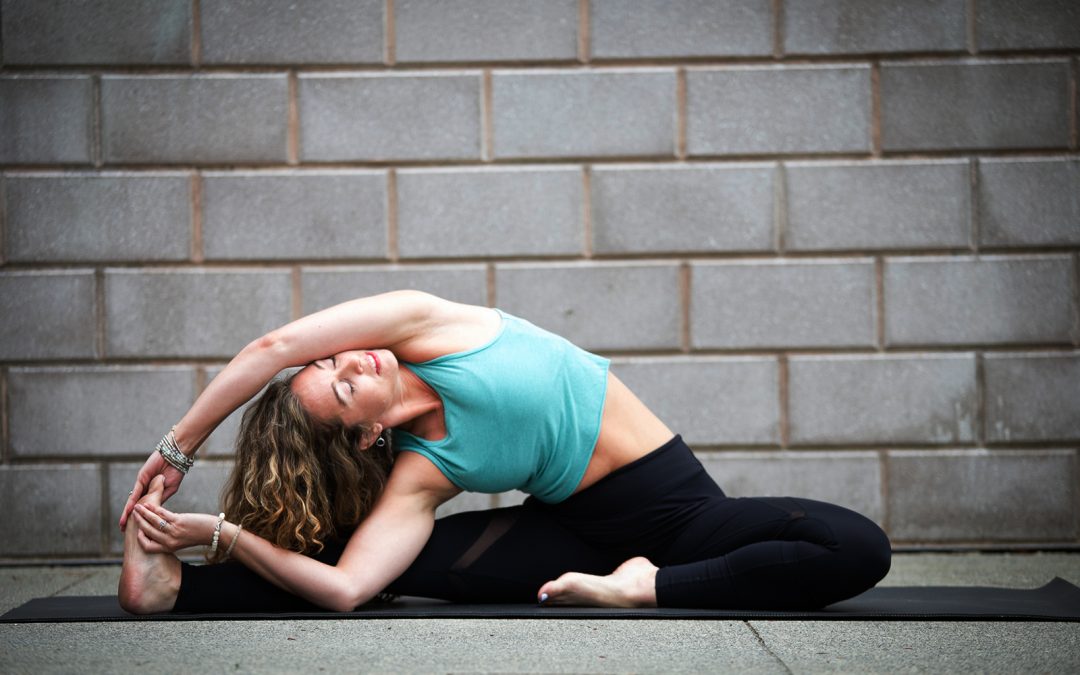At the beginning of every teacher-training program I have my students write an essay on this very question. I ask them to do this before they read any of the manuals or textbooks for the course. As I’m sure you can imagine, I get many different answers.
A quick Google search tells me yoga is “a Hindu spiritual and ascetic discipline, a part of which, including breath control, simple meditation, and the adoption of specific bodily postures, is widely practiced for health and relaxation.”
I’m going to say it, Google (a.k.a The Oracle) is wrong! Gasp! The point of yoga is not health and relaxation, that is not the highest aim of yoga. It might be a side effect, a benefit that we gain from practicing yoga but it isn’t the whole story.
So, what is yoga? Yoga translates to ‘union’ or ‘to yolk together.’ In its highest form, this means to connect the individual soul with the higher consciousness, whatever that may mean for you in your spiritual beliefs. Many people translate this as a union between mind, body, and spirit. The union is also experience by yogis becoming more present and mindful in the moment. Also, when practicing yoga one becomes more deeply connected to their community and all of humanity by recognizing that at our deepest level we are all the same.
There are many different pathways of yoga. They all lead to the same place, the same union. You can think of the word Yoga like the word sport. There are many different sports, all under the umbrella of the word sport. There are also many different ‘yogas.’ There is a path to union for everyone.
Bhakti Yoga — The yoga of love and devotion. Souls on this path strive to see and love the divinity in things.
Hatha Yoga — A physical set of asanas (postures), which are meant to purify the body, build awareness, and prepare one for sitting in mediation.
Jnana (Gyana) Yoga — The path of wisdom, which emphasizes the application of discriminative intelligence to achieve spiritual liberation.
Karma Yoga — People on this path devote themselves to humanity, without attachment to the results. They believe that all action is from the higher consciousness and they are merely an agent of this force.
Mantra Yoga — Using repeating of a mantra, japa, as a means to calm the mind and connect to the higher consciousness.
Raja Yoga — Royal or highest path of Yoga. This is the most common path in North America. The Indian sage Patanjali systematized Raja Yoga in the Yoga Sutras and clarified the 8 limbs (Ashtangha). It combines the spirit of all the other paths.
Yoga is many things to different people. I believe this is the beauty of yoga, it is what you make it. It is a science, it is an art, it is a physical, mental and emotional experience. Under the umbrella of yoga there are meditation practices, pranayama (breathing practices), asanas (postures)… the list goes on and on. It is all of these things and we practice yoga to find Union.. Union with the highest power, Union with the present moment, Union with our truest self, and Union with each other.
The truth is, yoga doesn’t fit in a box. It is an ever-evolving practice to bring us a deeper sense of peace and allow us to act from our highest self. To connect to who we really are.
So, back to my students, they all get the essay ‘right.’ Whatever they write, that is their truth at that time. For them, that is yoga.


